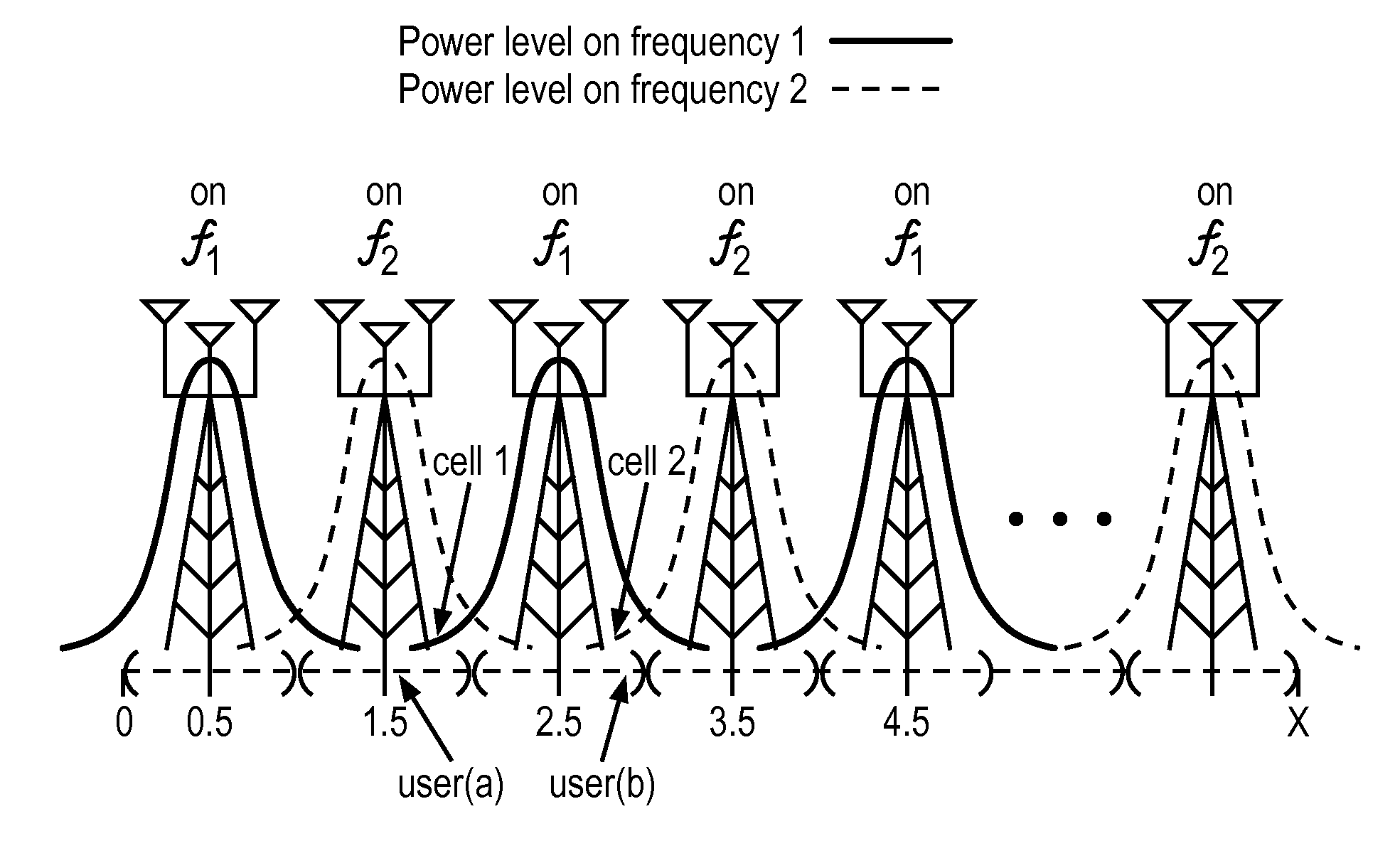Method for selective antenna activation and per antenna or antenna group power assignments in cooperative signaling wireless MIMO systems
a wireless mimo and antenna activation technology, applied in the field of multi-input multiple output (mimo) wireless systems, can solve the problems of limiting the rate at which a user can be served, and affecting the service quality of users
- Summary
- Abstract
- Description
- Claims
- Application Information
AI Technical Summary
Problems solved by technology
Method used
Image
Examples
Embodiment Construction
[0050]Embodiments of the invention include a method by which antennas distributed across a geographic area are selectively activated across frequency and / or time, with a specified power to each antenna when active as a function of frequency and / or time, in order to achieve an improved balance of resources of such power and antennas, thereby allowing the system to improve wireless efficiency. In one embodiment, the antennas that are activated, and the power per antenna, changes with time and / or frequency in a purposeful and advantageous way that balances the benefits of interference mitigation to the service needs of different users. Specifically, sometimes users are given an advantage at the expense of other users, and sometimes those same users are put at a disadvantage to the benefit of other users. By matching power correctly to the number of antennas and interference levels, a better use of the wireless resource can be obtained. The net result is often net benefit to all users. ...
PUM
 Login to View More
Login to View More Abstract
Description
Claims
Application Information
 Login to View More
Login to View More - R&D
- Intellectual Property
- Life Sciences
- Materials
- Tech Scout
- Unparalleled Data Quality
- Higher Quality Content
- 60% Fewer Hallucinations
Browse by: Latest US Patents, China's latest patents, Technical Efficacy Thesaurus, Application Domain, Technology Topic, Popular Technical Reports.
© 2025 PatSnap. All rights reserved.Legal|Privacy policy|Modern Slavery Act Transparency Statement|Sitemap|About US| Contact US: help@patsnap.com



